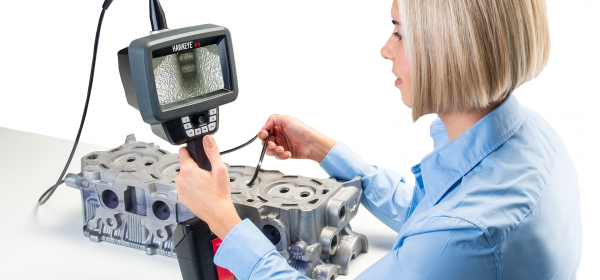How To Inspect Automotive Cylinders

March 11, 2021
Car trouble happens to everyone sooner or later. One of the worst things that can happen to your vehicle is a problem with its cylinders. How to inspect automotive cylinders comes down to the type of car you have and what’s most convenient according to the layout of the engine. However, there are a few easy ways to effectively diagnose potential cylinder trouble.
What Is an Automotive Cylinder?
The cylinder is one of the most important parts of your vehicle’s engine. They are pressurized and sealed pistons responsible for moving fuel. As your car runs, the cylinders make sure gas is evenly and regularly distributed as needed. This even dispersal of fuel ensures no part of the engine lacks the essential combustible material necessary to run properly. Unsurprisingly, failure in the cylinders can put a lot of wear on cars if not caught in time. It’s a serious issue that can have a lasting effect on the longevity of your vehicle.
How To Tell if Your Cylinders Have a Problem
Cylinder problems are serious in the overall health of your vehicle. As such, your vehicle will give clear signals when something is amiss. Symptoms of cylinder failure often include overheating or misfiring. As cylinders are responsible for moving fuel, it’s also a good idea to check for any signs of leaks when you suspect an issue.
Often, there is also a noticeable smell, and the engine will sometimes even issue smoke. You should take any instance where your vehicle smokes very seriously, especially if the smoke is caused by fuel or other liquids burning on overheated components. Finally, pressure must be balanced throughout a cylinder. Check the pressure using a gauge to determine if there is an imbalance.
Inspecting With Borescopes
Sometimes, engine problems are extremely hard to diagnose. This is especially true for vehicles with compact engine designs. No one wants to disassemble an entire engine just to guess at a problem. That’s why automobile mechanics regularly employ borescope technology. Rigid borescopes allow mechanics to look deeper into an engine block.
The lens, mounted to a hollow rod, can be slipped between components for a detailed up-close look. Understanding how to inspect automotive cylinders couldn’t be simpler. Simply turn on the device and begin inspecting! This is particularly useful when diagnosing cars, especially when it comes to examining the health of cylinders. Using a borescope, mechanics can check every side and seam on your vehicle’s borescope to check for subtle discoloration indicative of a cylinder leak. This saves everyone precious time and money, allowing you to get back on the road again, safe and sound.